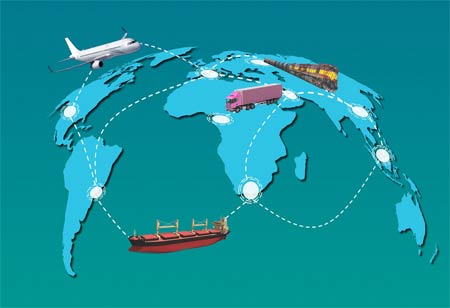THANK YOU FOR SUBSCRIBING
THANK YOU FOR SUBSCRIBING

By
Logistics Transportation Review | Wednesday, January 24, 2024
Stay ahead of the industry with exclusive feature stories on the top companies, expert insights and the latest news delivered straight to your inbox. Subscribe today.
The automotive industry has advanced significantly over the past ten years. However, carriers can expect ongoing improvements and possibilities to capitalize on new technologies since software upgrades are a frequent feature of technological growth. Electrification is anticipated to be the following significant change in the transportation sector, and these technologies prepare the way for a smoother transition for drivers, carriers, and buyers alike.
Fremont, CA: Technologies related to transportation logistics are constantly developing and changing quickly. New developments in this industry include using the Internet of Things (IoT) and artificial intelligence (AI) to provide clients peace of mind and efficiency for carriers and drivers. These upgrades frequently save costs and lessen the carrier's liability.
These four innovations, developed during the last ten years, have fundamentally changed the industry:
Route Optimization
Planning the most practical path for a car to go between two locations while accounting for variables like traffic, weather, and destination locations is known as route optimization. Although it may be done manually, route optimization is more frequently carried out with software that considers many variables, lowering fuel costs, enhancing driver safety, and expediting delivery times. By guaranteeing on-time delivery, it can also contribute to increased customer satisfaction.
Electronic Proof of Delivery (ePOD) Apps
Carrier time was divided between document management and vehicle transportation before digitalization. A more effective, accurate, and timely process is now possible thanks to eliminating mountains of paperwork, examinations, and manual interactions with ePODs. By managing everything in one location and digitizing much of their workflow, ePOD frees up their time to move automobiles instead of answering phones and completing paperwork.
Live Tracking
Across the board, "live tracking" or real-time location sharing has changed the game. Traffic, weather, and other uncontrollable factors frequently affect a driver's anticipated arrival time. For clients, this can result in annoyance, anxiety about theft, and sometimes even a missed transaction.
Due to the transparency of live tracking, everyone involved is automatically informed of the movement of their loads. As a result, drivers aren't answering calls from the road asking where a vehicle is or why there is a delay and customers can feel more at ease knowing that their ETA is accurate and up to date.
Load Matching
It is all about matching loads with available vehicles to provide carriers with information on proactively selected loads that suit them. Load matching saves time and effort by automatically suggesting loads that meet carrier-defined criteria or intelligently complement prevailing loads on a trip to maximize open capacity. This eliminates the need for load matchers to spend hours per day exploring load boards for loads that suit their needs. While cutting expenses, load matching increases productivity, customer happiness, and utilization.
I agree We use cookies on this website to enhance your user experience. By clicking any link on this page you are giving your consent for us to set cookies. More info





